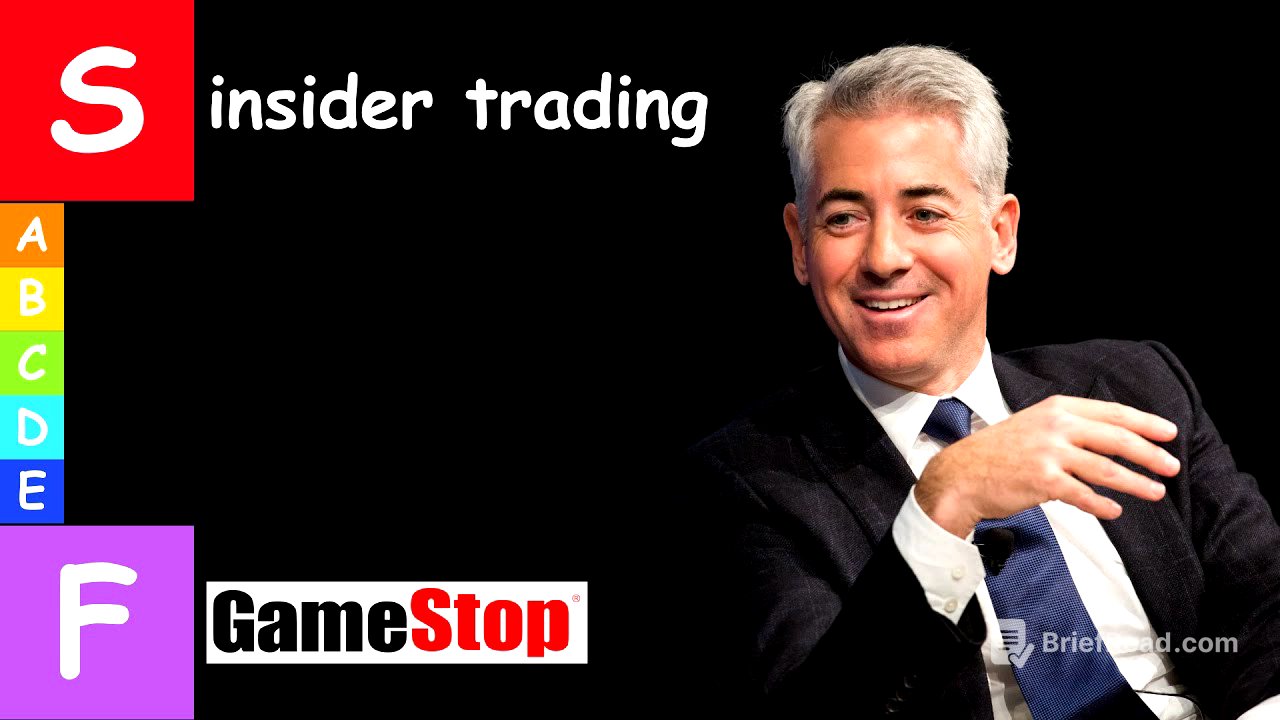TLDR;
This video dissects various hedge fund trading strategies, ranking them based on factors like alpha generation, scalability, risk, and complexity. It covers long-short equity, distressed debt investing, macro investing, activist investing, quantitative trading, merger arbitrage, and insider trading, providing examples and insights into each strategy's potential and pitfalls.
- Long-short equity trading is a classic strategy with moderate risk and scalability.
- Distressed debt investing involves high risk and complexity but offers potentially high returns.
- Macro investing relies on global economic trends and involves high leverage and volatility.
- Activist investing aims to improve company performance through shareholder activism.
- Quantitative trading uses data and algorithms to identify and exploit market patterns.
- Merger arbitrage capitalizes on the price difference between a target company's stock and the acquisition offer.
- Insider trading, while illegal, offers off-the-charts alpha generation but carries significant regulatory risk.
Intro [0:00]
Hedge funds employ a range of complex trading strategies to outperform the market. These strategies go beyond simply buying and holding stocks, and involve aggressive and sometimes obscure methods to generate profits. The video aims to explore and rank these strategies, from quantitative approaches to activist tactics, and even insider trading, to understand their strengths and weaknesses.
Long Short Equity [0:58]
Long short equity trading involves buying stocks expected to increase in value (going long) and shorting stocks expected to decrease. This strategy can hedge against market risk, but requires accurate fundamental analysis. While scalable and with low regulatory risk, it's difficult to gain an informational edge due to market efficiency, and any edge is quickly eroded as soon as the thesis becomes public. It's rated as a B-tier strategy due to these limitations.
Distressed Debt [3:06]
Distressed debt investing involves purchasing debt from companies nearing bankruptcy. Hedge funds buy this debt cheaply, aiming to profit during the bankruptcy process where bondholders have priority in asset distribution. This can lead to debt being converted into equity or significant returns through legal and restructuring processes. While risky and complex due to its reliance on legal outcomes, it offers high alpha generation and edge durability, earning it a solid A rating.
Macro Investing [7:20]
Macro investing involves making large directional bets on global economic trends, such as interest rates, currencies, commodities, and geopolitical events. This strategy requires significant leverage and carries high volatility, but offers substantial upside potential. It demands teams of economists and geopolitical experts, and its success depends on accurate forecasting. Despite the risks, it's considered a solid A-tier strategy due to its scalability and the success of prominent traders who utilize it.
Activist Investing [8:58]
Activist investing involves a hedge fund acquiring a significant stake in a public company and then pushing for changes to improve its performance. This can include demands for leadership changes, cost reductions, or strategic shifts. While it offers solid alpha potential and durability by creating its own catalysts, it's limited in scalability and carries reputational risk. The lengthy process and resource-intensive nature make it an A-tier strategy, but it can be highly rewarding when successful.
Quantitative Trading [10:43]
Quantitative trading involves using mathematical models and algorithms to identify and exploit market patterns. Strategies like statistical arbitrage, index rebalancing arbitrage, and high-frequency trading are employed to generate profits. This approach requires advanced technology, massive amounts of data, and skilled personnel. Despite the high operational complexity, overfitting risk, and crowding risk, its high sharp ratios, scalability, and durability make it an S-tier strategy, representing the closest thing to an infinite money glitch on Wall Street.
Merger Arbitrage [14:15]
Merger arbitrage involves investing in the stock of a company being acquired, capitalizing on the price difference between the current stock price and the acquisition offer. This strategy relies on evaluating the risk of the deal falling apart and requires specialized knowledge in mergers and acquisitions. While it offers solid alpha generation, its scalability depends on the economy and the number of deals occurring. The time to profit can vary, and the risk of the deal becoming less attractive over time exists, making it a B-tier strategy.
Insider Trading [15:24]
Insider trading involves making trades based on material, non-public information. While illegal, it offers off-the-charts alpha generation and a high sharp ratio. It requires low operational complexity but has limited scalability and significant regulatory risk. Despite the legal consequences, its unbeatable potential makes it an S-tier strategy, especially if one can avoid severe penalties.
